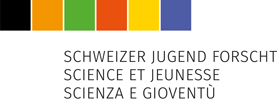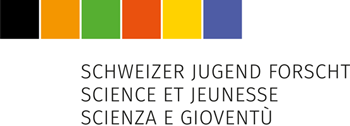Physik | Technik
Julia Gschwind, 2000 | Ruettenen, SO
The object of this paper is to describe the opportunities and drawbacks of a smart kitchen device focused on reducing food waste. A cupboard with the ability to identify items based on their barcode was built. In addition, an Optical Character Recognition Engine and multiple filtration processes were used to extract the expiration date. Throughout all of this, the user input was kept at a minimum making the Smart Kitchen Cabinet a suitable device in everyday situations. Based on the extracted information, a daily email reminder is sent to warn about soon to be expired items. Moreover, the user can also access the data over a Node-RED Dashboard stating all items currently located in the cupboard, filtered by their expiration date. After conducting two tests, it was established that if a clear distinction between fore- and background is given, 80% of the expiration dates and 95 % of the barcodes were successfully identified.
Fragestellung
In Switzerland, one million tons of food is wasted in private households every year. Nutrition has a strong environmental impact due to its high land and water consumption, CO2 emissions and the loss of biodiversity. Additionally, a growing population requires a more conscious behavior regarding resource management. Meanwhile, home automation has been a popular way to increase productivity and comfort. However, only few gadgets have been found which are effective in reducing food waste. This project therefore attempts on exploring the possibilities and identifying problems of a smart home device focused on preventing food waste.
Methodik
According to the Federal Office for the Environment, one of the main causes for food waste is the insufficient knowledge about shelf life and storage. This was the primary concern set to be addressed by the Smart Kitchen Cabinet. The cabinet aims to reduce food waste by reminding the user of soon to be expired items. It is equipped with a scanning platform consisting of 3 cameras each connected to a Raspberry Pi, a weight sensor and a servo motor. When an item is entered, a 360 degrees scan is conducted. Afterwards, the images taken during the scan are evaluated. Tesseract is used to extract all characters found in the images and multiple filtration processes are applied to find the expiration date. In addition, the product is identified by using zBar to interpret the barcode. Finally the user can be notified by email or by accessing a Node-RED Dashboard stating all items and when they will expire. When an item is extracted, the weight sensors underneath the storage shelf calculate a weight difference and the complementary item is deleted from the database.
Ergebnisse
In a first test run, 25 % of the barcodes and 15% of the expiration dates were recognized. Due to the low accuracy, the experiment was repeated after exchanging the Raspberry Pi cameras (5 MP) with 12 MP cameras. In the second test the prototype was able to identify 95 % of the barcodes correctly. When a strong contrast between the fore- and background of the expiry date was given, 80 % of the dates were accurately identified. However, when the contrast was low, only 10 % were detected.
Diskussion
The results show, that the prototype performs well when a strong contrast between fore- and background is shown. In Switzerland, there are currently no regulations regarding the display of expiration dates. Therefore it is difficult to find patterns which could be considered during image processing. Additionally, high resolution cameras are required as dates can be blurry or printed in a small size. Nevertheless, a fully automated prototype was constructed which only requires the user to enter the product and is therefore fit for the use in private households.
Schlussfolgerungen
The Smart Kitchen Cabinet is able to remind the user of soon to be expired items and therefore prevent food waste. However, regulations regarding the display of expiry dates are required to enable the user to fully rely on this system. The prototype is still being expanded by adding features that enhance the user experience such as a recipe proposal based on available items and an indicator showing the filling level of each product based on its weight. The Smart Kitchen Cabinet does therefore not only contribute to food waste prevention but also offer support when planning meals and creating shopping lists.
Würdigung durch den Experten
Prof. Dominique-Stephan Kunz
Frau Julia Gschwind hat ein wichtiges Thema für Gesellschaft und Umwelt aufgegriffen. Mit ihrem «Smart Kitchen Cabinet» kann Sie einen Beitrag leisten um die in den Haushalten weggeworfenen Lebensmittel zu reduzieren. Ihre Entwicklung zeigt wie vielschichtig eine solche Lösung ist. Die Experimente veranschaulichen was notwendig ist, damit ein solches System zuverlässig und automatisiert arbeiten kann. Ihre hochstehende Arbeit besticht durch wissenschaftliches Vorgehen, Einsatz von anspruchsvollen Technologien, hochschulreifer Dokumentation und erfüllen eines Marktbedürfnisses.
Prädikat:
hervorragend
Alfred-Escher-Sonderpreis der ETH Zürich
Kantonsschule Solothurn
Lehrer: Marco Aebischer



